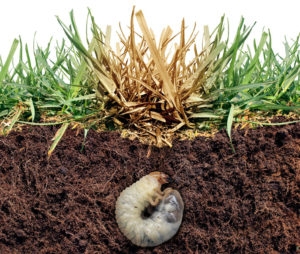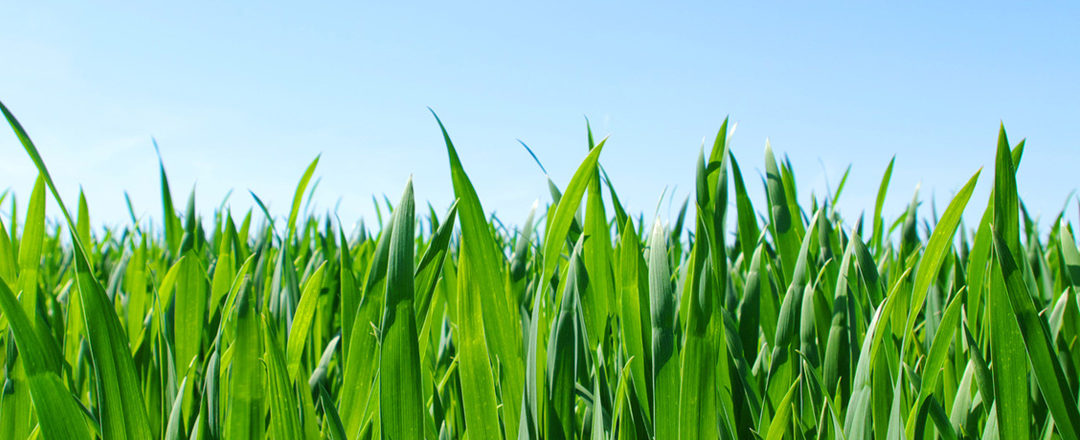The Damage Grubs Do, & When It Happens
 Most grubs eat the roots of the grass plants at or just below the soil line. They “shear” off the roots of the lawn. A gentle tug will pull back large slabs of turf like a piece of carpet. Though some feeding takes place in the spring, most grub damage occurs during late summer and fall.
Most grubs eat the roots of the grass plants at or just below the soil line. They “shear” off the roots of the lawn. A gentle tug will pull back large slabs of turf like a piece of carpet. Though some feeding takes place in the spring, most grub damage occurs during late summer and fall.
Grubs continue active feeding until cooler temperatures send them deeper into the soil, where they spend the winter. In the spring, grubs return to the surface to feed for a short while before pupating. Pupation is an inactive stage during which the grub changes into a beetle.
Skunks & Raccoons Damage Lawns by Digging For Grubs
Owners of lawns with a serious grub problem will often discover large areas of turf pulled back or ripped out. This is caused by skunks, raccoons and other large animals that visit the lawn at night for an easy meal. This kind of damage is nearly always a sign that a grub control treatment is needed.
Out Of Sight – Our Of Mind
Grubs work out of sight and can cause serious damage before they’re even discovered. Well-watered lawns can maintain color and appear to be healthy even as the grubs are completely destroying the turf’s root system. Because grubs separate the sod from its roots, recovery of the existing sod is not always possible. In very severe cases the lawn must be reseeded.
Checking Your Lawn For Grubs
Browning turf or areas damaged by animals may have active grubs. Damaged turf will tend to pull away from the soil easily — like a piece of carpet or freshly laid sod. If you suspect grubs, simply grab the grass with both hands and tug. If the turf is loose, continue to pull until a section comes away from the soil. If grubs are causing the problem, you’ll see them lying on the soil in their typical “c” position.
When Action Is Needed
When a “damaging population” exists (8 to 10 grubs per square foot) grub control should be applied. Tuff Turf Molebusters uses several professional grade products that provide effective and rapid control of grubs. If the damage is moderate, very heavy watering and balanced fertilization after treatment of grubs will encourage the “sod” to reestablish roots and regain health quickly.


